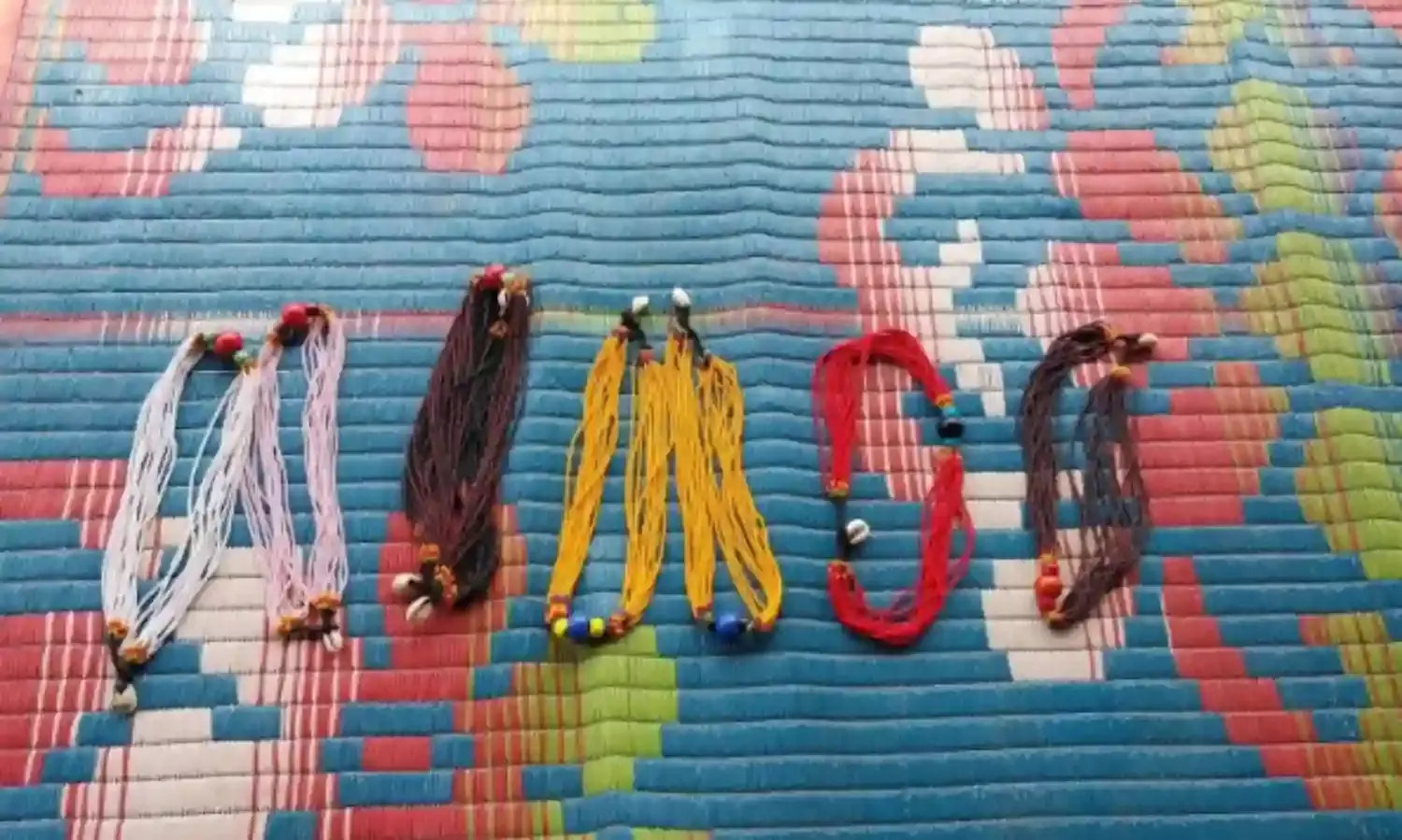Making Jewelry in Baiga Land
Photo story

In Baihar on the fringes of the Kanha Tiger Reserve, in the village of Bandhatola, a group of Baiga Adivasi women are making colourful neckpieces with glass beads to help sustain their livelihoods. Members of a self-help group, the Baghin Ajivika Swasahayta Samuh, formally created last year, many of the women making necklaces here this morning are dressed in traditional attire. Their faces and bodies bear godnas or tattoos.
Hironda Bai, dressed in orange and green, says the members of the group have worked jewellery informally since 2017 but are now self-reliant. With Rs 30,000 worth of initial support from the state government’s forest department, Hironda Bai, Geeta Bai, Pirmotin Maravi and Suganti Bai are now expert at making necklaces a hit with tourists, some of whom even visit the village to buy directly from them.
Making necklaces is nothing new for them, as Baigas traditionally make jewellery at home and often wear multiple necklaces, especially during festivals. Many women in the Dindori district about 100 km from Kanha can be seen procuring raw material for making jewellery from the local markets. But they say that working long hours sometimes hurts the eyes as the beads are quite small. The small ones are preferred as they look better.
Sunita Dhurwey, a member of the collective and teacher at the village primary school, credits the initiative to an organisation based in Mumbai, the Last Wilderness Foundation. “There are some 12 women in the group. The raw materials needed for the necklaces are procured from a wholesaler in Mumbai for their high quality and the finished items are mostly sold at the souvenir shop in Kanha.”
The women have modified their designs a bit to appeal to the customers. The group has earned a profit of Rs 75,000 so far. Their bead necklaces cost around Rs 600 a piece, though the ones with silver coins in them are priced as high as 3000.
According to Vidya Venkatesh, director of the Last Wilderness Foundation, the initiative is meant to ensure livelihood opportunities for Indigenous communities living in and around the Kanha Tiger Reserve.
Her organisation works on wildlife conservation, especially on mitigating human-wildlife conflict. She says the forest department “caught” some Baiga individuals some years ago when they had entered the reserve forest to collect forest produce for their livelihoods. Afterwards the forest department asked her organisation for help.
“It took me a year to understand what skills the women have. I wanted to find something which they liked doing and will continue in the future. At one point of time a woman showed her jewellery she got during her wedding. Then we encouraged them to make jewellery for the market.”
Venkatesh describes the traditional Baiga designs as heavy. “So, intervention was made to make the Baiga jewellery popular with the urban crowd.” She adds, “Earlier my organisation used to supply the glass beads needed for the jewellery, but now the women purchase it themselves by placing orders.”
According to Bamni Maravi, who makes neckpieces and has been part of the group since its formation, a single piece can sometimes take two days to make with household chores in between. She usually makes four to five neckpieces a month.



